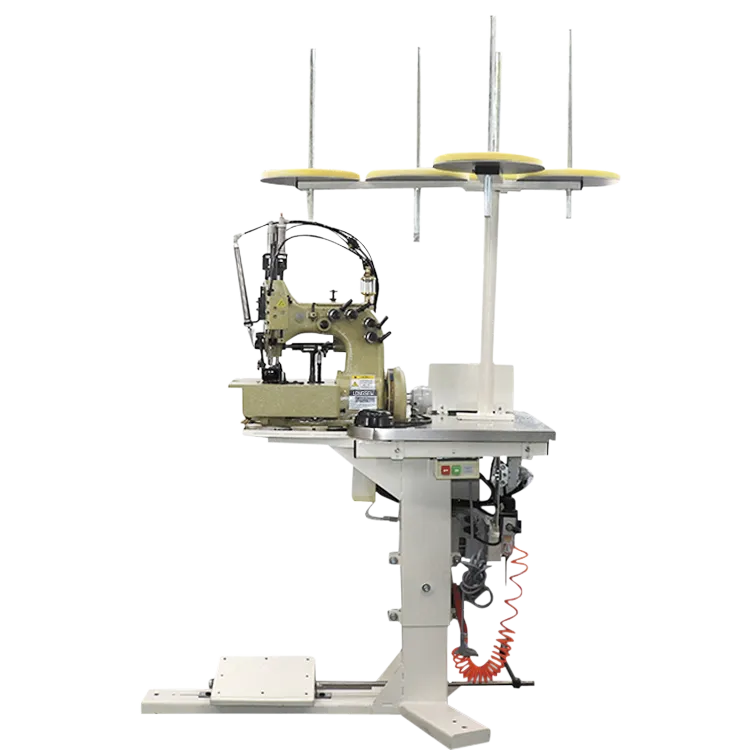Different Types of Leather Sewing Machines for Various Crafting Needs
Types of Leather Sewing Machines A Comprehensive Guide
When it comes to leather crafting, the right sewing machine can make a significant difference in the quality and ease of your work. Leather is a thick and durable material, which demands specific features and capabilities in a sewing machine. Given the variety of leather types and project requirements, understanding the different types of leather sewing machines available is crucial for both novice and experienced leathercrafters.
1. Walking Foot Sewing Machines
Walking foot sewing machines are a popular choice for leatherworkers due to their unique feeding mechanism. Unlike standard machines, these have a walking foot that moves the fabric both from above and below, ensuring that thick layers of leather are fed evenly through the machine. This is particularly useful when sewing multiple layers or thicker leather, preventing slippage and puckering. These machines are versatile and can handle a variety of projects, from wallets to handbags and even heavier items like belts and saddles.
2. Teflon Foot Sewing Machines
For those working with very smooth leather finishes, Teflon foot sewing machines are an excellent option. The Teflon foot glides over the leather's surface, reducing friction. This allows for smoother sewing and prevents the material from sticking to the presser foot—an important consideration when using softer leathers that might otherwise pull and distort during stitching. Teflon feet can often be added to many standard sewing machines as an accessory, making this a flexible option for crafters.
Heavy-duty sewing machines are designed to handle tougher materials, making them suitable for leatherwork. These machines come equipped with powerful motors and reinforced structures that enable them to sew through multiple layers of thick leather. They typically feature robust needles and heavy-duty presser feet. While not specialized for leather, many heavy-duty models can handle a range of materials, making them ideal for those who work with various fabrics alongside leather.
4. Leather Stitching Machines
types of leather sewing machines

Leather stitching machines focus specifically on providing the best stitch types and tensions for leather. These models often include specialized features like adjustable stitch length and width to accommodate different leather thicknesses and types. They also support a variety of stitch types, including straight, zigzag, and overlok stitches. While they tend to be more expensive, their ability to create professional-quality seams is invaluable for serious leather artisans.
5. Industrial Leather Sewing Machines
For large-scale production or heavy usage, industrial leather sewing machines are the gold standard. Built for durability and longevity, these machines can sew at high speeds and handle extremely thick materials with ease. They often feature advanced technology like automatic needle positioning and programmable stitch patterns. However, these machines are typically more expensive and require a dedicated workspace, which may not be practical for hobbyists.
6. Portable Leather Sewing Machines
For those who require flexibility in their crafting, portable leather sewing machines are a great choice. These lightweight machines often come with a compact design without sacrificing power. They are ideal for those who attend craft fairs or classes, as they can easily be transported. While they may not handle heavy-duty projects as effectively, many are capable of sewing medium-weight leather and other fabrics with precision.
7. Home Sewing Machines with Leather Capabilities
Many home sewing machines nowadays are equipped with features that make them suitable for leather. With the addition of a walking foot or Teflon foot and the right needle, these machines can tackle leather projects. While they may not have the heavy-duty capacity of specialized machines, they work well for lighter leather projects such as small bags, wallets, and accessories.
Conclusion
Selecting the right leather sewing machine hinges on understanding the specific needs of your projects, the types of leather you’ll be working with, and your level of expertise. Whether you are a hobbyist or a professional leatherworker, the right equipment can significantly enhance your crafting experience. Investing time in choosing the right machine will not only improve your sewing results but also make the process more enjoyable and efficient. With so many options available, there’s undoubtedly a perfect leather sewing machine waiting to help you bring your creative visions to life.
-
Industrial Cylinder Arm Sewing Machine: Revolutionizing Heavy-Duty SewingNewsJul.28,2025
-
Cylinder Arm Sewing Machine: Perfect for Special Sewing ApplicationsNewsJul.28,2025
-
Cylinder Bed Sewing Machine: Essential for Sewing Complex MaterialsNewsJul.28,2025
-
Heavy Duty Sewing Machine: The Essential Tool for Industrial ApplicationsNewsJul.28,2025
-
Computerized Pattern Sewing Machine: Revolutionizing Precision StitchingNewsJul.28,2025
-
Heavy Duty Industrial Sewing Machine: Power Meets PrecisionNewsJul.28,2025
-
Leather Sewing Machine: The Industrial Standard for Tough MaterialsNewsJul.18,2025





























